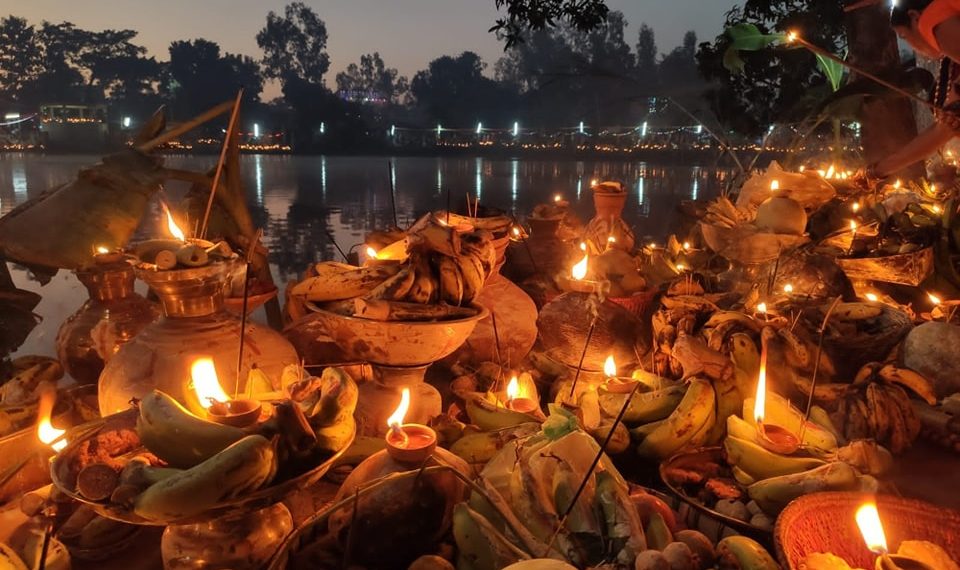After Tihar, visitors might think the festive season in Nepal has ended — but in the southern plains, preparations begin for another major celebration: Chhath Puja. The festival draws thousands of devotees from across Nepal and India to worship at the famous Janaki Temple in Janakpur and riverbanks throughout Terai.
Chhath Puja is a four-day festival dedicated to the Sun God and his consort, Usha. It’s a time to thank the sun for sustaining life and to pray for the well-being of one’s children, health, and a good harvest. Many believe those who worship the sun during Chhath are protected from skin ailments.
Pilgrims gather at rivers, ponds, and lakes to perform the rituals. Once confined mostly to the Terai, Chhath has now become visible across Nepal wherever there are Maithili and Bihari communities.
There are several legends behind Chhath. One tells the story of King Priyavrat and Queen Malini, who, childless and in despair, were blessed with a son after worshipping Goddess Shasthi (Chhathi Maiya). The festival is also linked to Hindu epics — in the Mahabharata, Draupadi and Karna are said to have worshipped the sun for strength and healing, while in the Ramayana, Lord Rama and Sita performed similar rituals after returning to Ayodhya.
The festival unfolds over four strict days.
Day 1: Nahay Khay – Devotees bathe in rivers or ponds to purify themselves and eat one simple meal to begin the vow of cleanliness and discipline.
Day 2: Kharna – Devotees fast throughout the day, breaking it at sunset with kheer (sweet rice pudding) and fruits, before beginning another long fast.
Day 3: Sandhya Arghya – Families gather at the ghats to offer prayers and water to the setting sun.
Day 4: Usha Arghya – Before sunrise, devotees return to the water to offer prasad to the rising sun, breaking their fast afterwards.
Preparations begin days in advance. Families clean ghats, prepare banana leaves, brass lamps, and bamboo baskets, and cook thekua, a sweet made from wheat and jaggery. The offerings are simple and sattvik (without onion or garlic).
Unlike many Hindu festivals led by priests, Chhath is performed by the devotees themselves. Standing knee-deep in water, they hold offerings in bamboo baskets or banana leaves, light earthen lamps, sing traditional lokgeet, and offer water to the sun with cupped hands. Those who do not fast assist by carrying baskets, lighting lamps, and caring for the elderly, making it a deeply communal event.
Although often associated with women, especially mothers, men also observe the fast and rituals.
As Chhath grows in popularity, environmental concerns have emerged. The use of plastic, lamps, and leftover offerings can pollute rivers. In response, local authorities have launched awareness campaigns and cleanup drives to promote eco-friendly celebrations.
Despite these challenges, Chhath remains one of Nepal’s most meaningful festivals, a celebration of gratitude, discipline, and harmony with nature. It brings together communities across social and regional divides, reminding everyone of the deep connection between faith and the natural world.
Pratikshya Bhatta is a junior editor with Nepal Connect.




